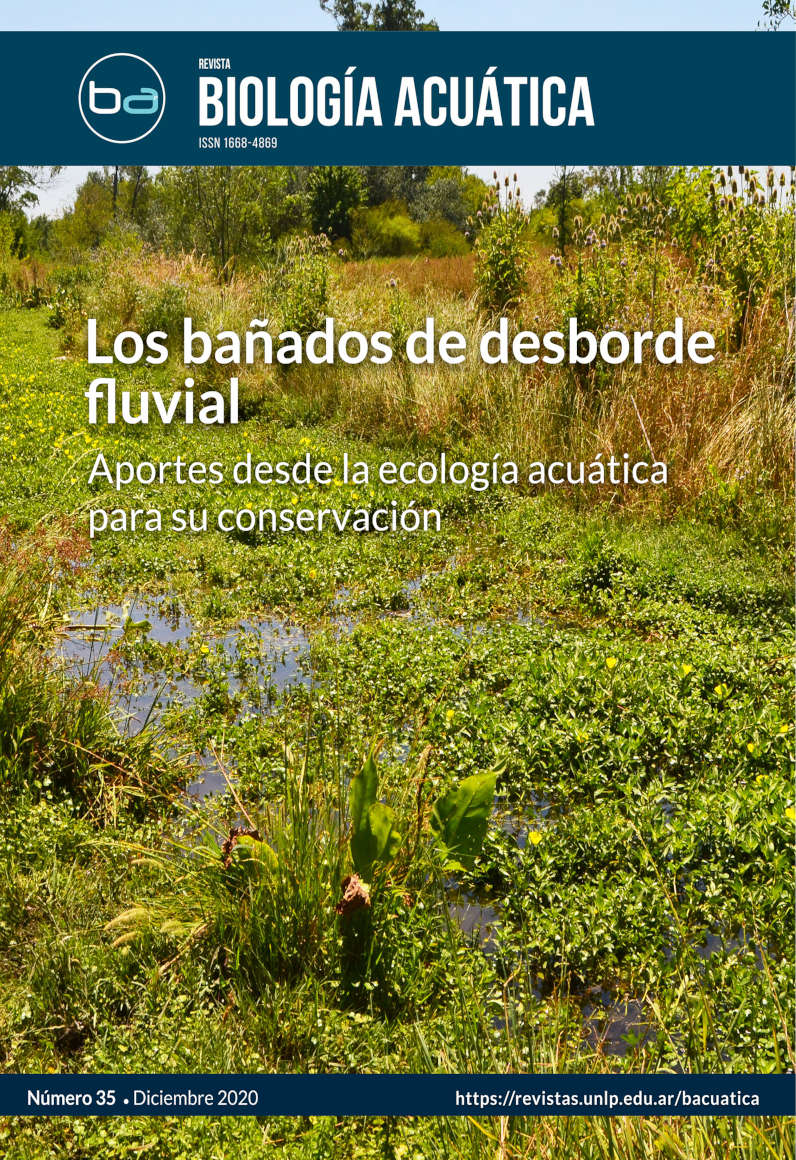The microorganisms that inhabit the river floodplains as indicators of the effects of urbanization and agricultural activity
DOI:
https://doi.org/10.24215/16684869e014Keywords:
Aquatic microbiota, ecosystem services, environmental changes, land use, wetlandsAbstract
Riverine wetlands play an integral role in the ecology of river basins and their self-purification capacity. The anthropic demand for space and water jeopardizes its biota and the ecosystem benefits they provide. The objectives of this work were to analyze the assemblages of microorganisms that inhabit riverine wetlands, relate their variations to anthropogenic impact and evaluate how the microbiota can be an indicator of these environmental changes. The assemblages of benthic diatoms, phytoplankton, zooplankton, ostracods and fungi of four riverine wetlands were studied: two of peri-urban location with agricultural and horticultural land use (Del Gato and Carnaval), and two of rural location and livestock land use (Cajaravillas and Chubichaminí). In most of the groups the differences in relation to geographical location were clearly expressed, resulting in two kind of assemblages: rural (with more species sensitive to pollution and eutrophication) and peri-urban (with more species highly tolerant to pollution and eutrophication). In the latter, both the participation of the main taxonomic groups and the trophic levels were more restricted and related to the detritivorous path over the photosynthetic one, and the strategies to face water stress were emphasized. The results show the effects of human pressure, the importance that microorganisms acquire and the need of adequate use of the territory plans to avoid the loss of functions and benefits of these environments.





















